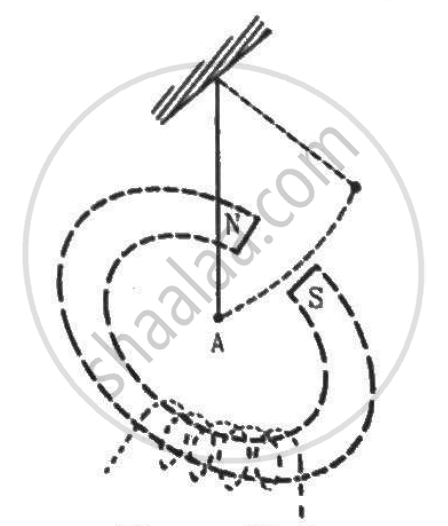Advertisements
Advertisements
Question
Consider a metallic pipe with an inner radius of 1 cm. If a cylindrical bar magnet of radius 0.8 cm is dropped through the pipe, it takes more time to come down than it takes for a similar unmagnetised cylindrical iron bar dropped through the metallic pipe. Explain.
Solution
For the magnet, eddy currents are produced in the metallic pipe. These currents will oppose the motion of the magnet. Therefore magnet’s downward acceleration will be less than the acceleration due to gravity g. On the other hand, an unmagnetised iron bar will not produce eddy currents and will fall with an acceleration g. Thus the magnet will take more time.
APPEARS IN
RELATED QUESTIONS
Two spherical bobs, one metallic and the other of glass, of the same size are allowed to fall freely from the same height above the ground. Which of the two would reach earlier and why?
Give one example of use of eddy currents.
If the magnetic field outside a copper box is suddenly changed, what happens to the magnetic field inside the box? Such low-resistivity metals are used to form enclosures which shield objects inside them against varying magnetic fields.
A metallic bob A oscillates through the space between the poles of an electromagnet (See the figure). The oscillations are more quickly damped when the circuit is on, as compared to the case when the circuit is off. Explain.

State applications of eddy currents.
How is Eddy current produced? How do they flow in a conductor?
The plane in which eddy currents are produced in a conductor is inclined to the plane of the magnetic field at an angle equal to ______.
Which one is not an application of eddy current?
A metal plate is getting heated. It can be because ______.
- a direct current is passing through the plate.
- it is placed in a time varying magnetic field.
- it is placed in a space varying magnetic field, but does not vary with time.
- a current (either direct or alternating) is passing through the plate.
